Affiliate disclosure: This post may contain affiliate links. Please see our Privacy Policy.
Cranberry wine is a wintertime favorite, and it’s sweet enough to balance the tart flavor of the cranberries.
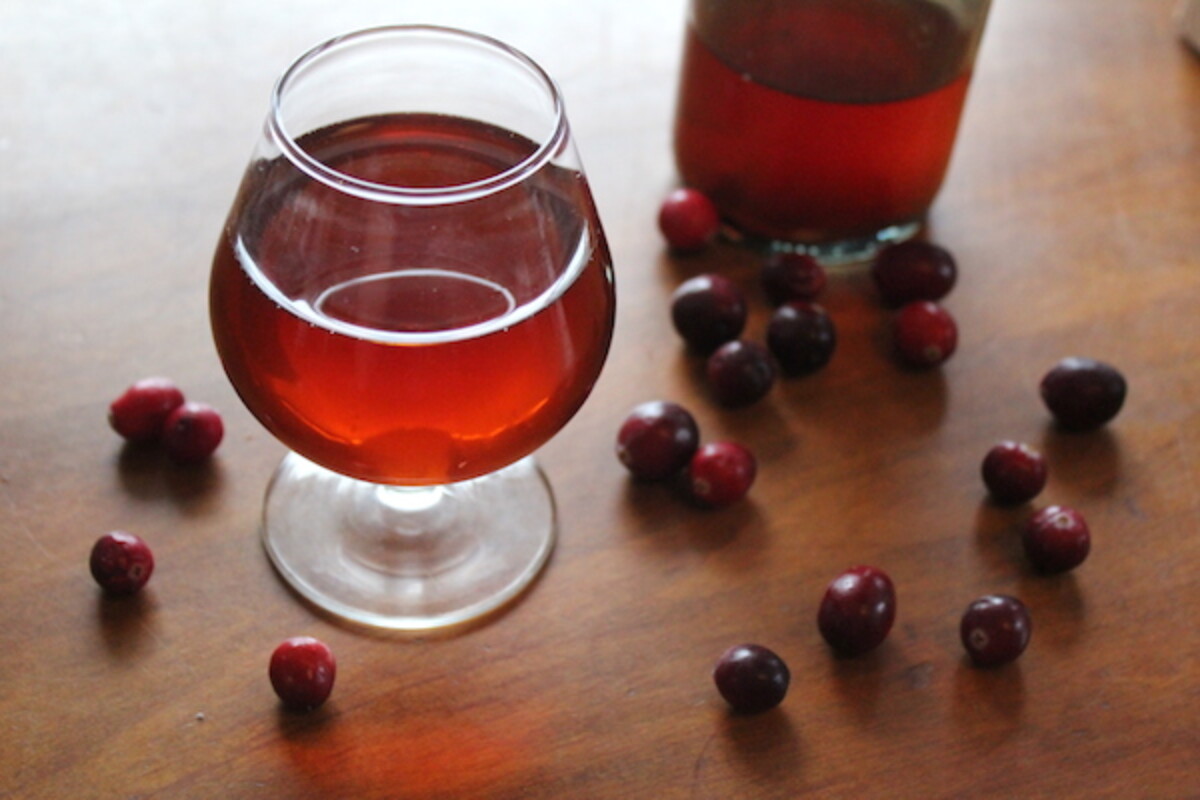
After sampling cranberry wine at a local vineyard, I was determined to make my own. It’s warm, fruity and well balanced with just enough tart astringency to give it character. Instead of topping my meal with cranberry sauce, once this wine has aged properly I’ll be drinking my cranberries in as homemade cranberry wine.
Originally I planned to use fresh cranberries as it only seemed proper. We grow cranberries right in our backyard, so I was hoping to be able to make cranberry wine with our own fruit. As the season went on, it became apparent that the squirrels had made off with much of this year’s harvest (along with the plums and wild hazelnuts too…). That’s ok, cranberries ripen late, and knowing that ours were out of the question meant I could start early.
Most store-bought cranberry juice contains an absurd amount of added sugar, often in the form of corn syrup. It not that the extra sugar is bad, this cranberry wine will need plenty of extra sugar added to ferment properly. Corn syrup will make the wine ferment really violently, and you’ll lose a lot of the cranberry flavor when that happens. Beyond that, when I’ve had cranberry juice cocktails they rarely taste much like cranberries.
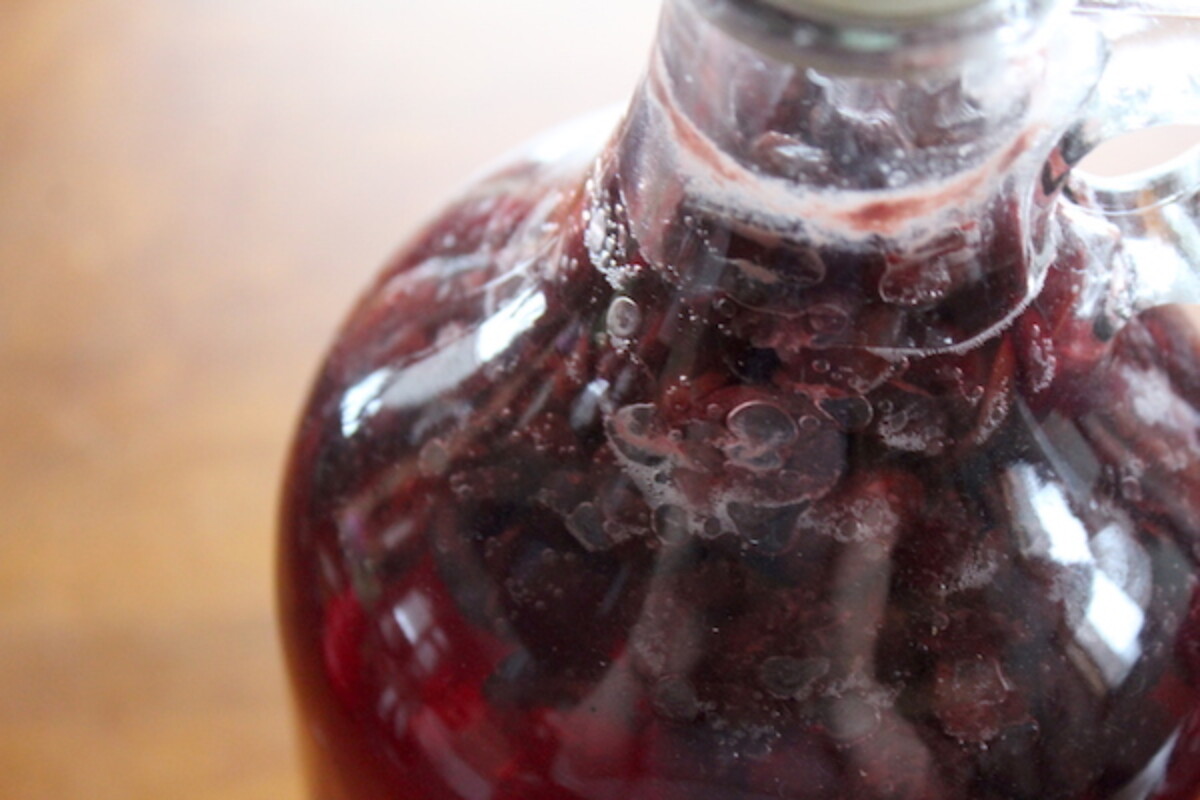
I use a wicked tart, unsweetened pure cranberry juice to make mixed drinks and I thought that would work really well in this cranberry wine. If you use sweetened cranberry juice, be sure to decrease the sugar accordingly, and ensure that it doesn’t contain any preservatives that will inhibit the yeast.
Start by using the cranberry juice to dissolve a bit of sugar in a saucepan. Heat it just until the sugar dissolves and then turn off the heat.
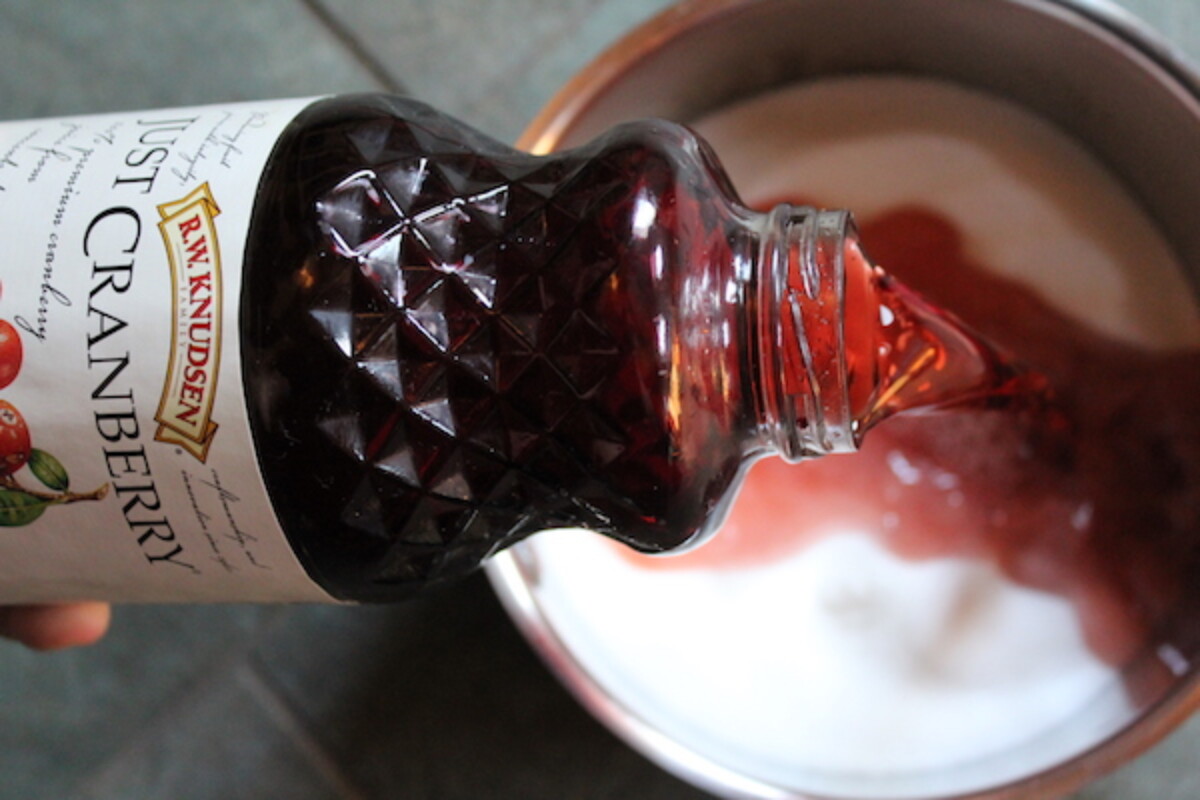
If you’re using fresh cranberries instead of juice, chop 3-4 pounds of cranberries and add them directly to the primary fermenter. These will be screened out after primary fermentation to allow the wine to clear, in the same way that I’ll filter out the raisins after the primary.
I prefer my wines on the dry side, so in the past I’ve used slightly less sugar than the full three pounds called for in many cranberry wine recipes, but after tasting it, I decided it really does need that extra sugar to balance the acidity.
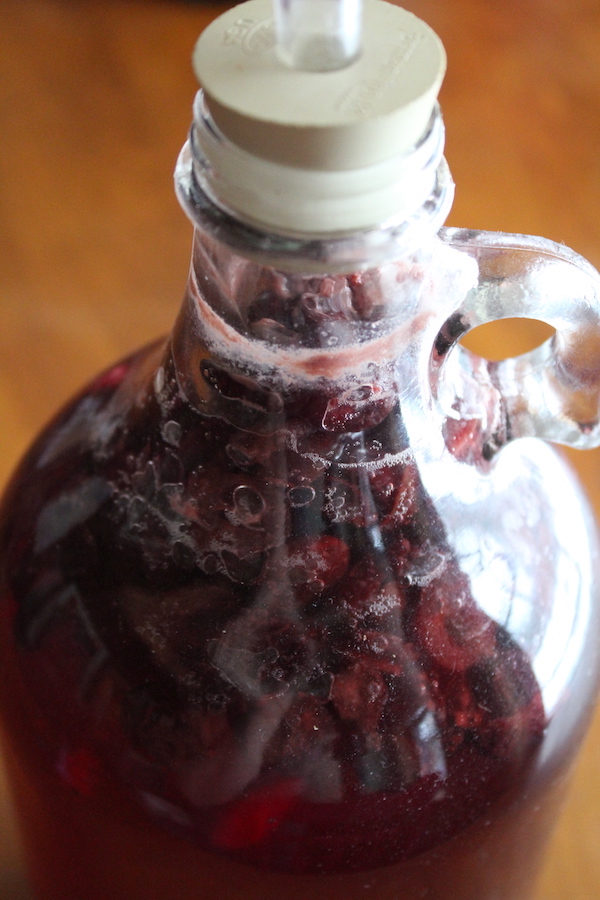
For additives, I’m just using yeast nutrient. The yeast nutrient will help make up for the fact that cranberries don’t have the same micronutrients as grapes, and will help the little beasties thrive. If you don’t have yeast nutrient, about 1/4 cup of raisins will do the trick instead. Pectic enzyme would also be a nice addition, and it helps the wine clear after fermentation. Consider adding 1 teaspoon at the beginning of fermentation.
Cranberries are wicked acidic on their own, so I’m skipping the customary addition of acid in this batch. I never use stabilizers for my mine, since I’m ok with a bit of sediment from residual bottle fermentation. Feel free to add Potassium Sorbate and Camden tablets (potassium metabisulfite) to completely end the fermentation and stabilize the wine before bottling if you want a dependably clear completely still cranberry wine.
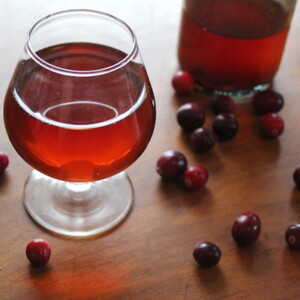
Homemade Cranberry Wine
Equipment
Ingredients
- 96 oz unsweetened cranberry juice, or 3-4 lbs fresh cranberries
- 3 lb sugar
- 1 lb golden raisins, for body, and to help feed the yeast, see note
- 1 tsp yeast nutrient
- 1 packet wine yeast, dissolved in water
- water to fill
Instructions
- Add the sugar and cranberry juice to a small saucepan and heat it just enough to dissolve the sugar. If using fresh cranberries, add water instead of juice and use it to dissolve the sugar.
- Allow the sugar and juice mixture to come to room temperature. While it’s cooling, dissolve the yeast packet in a small amount of lukewarm water. Allow it to bloom for at least 5 minutes.
- Add the yeast nutrient and raisins to the juice/sugar mixture and then pour it all into a primary fermentation vessel. Add the dissolved yeast.
- Cap with a water lock and allow the mixture to ferment in primary for 2-3 weeks. Alternately, allow the mixture to ferment without an airlock for about 5 days, then rack into secondary and add an airlock.
- Either way, once the mixture is in secondary, add an airlock. Ferment in secondary for 6-8 weeks before bottling. For a very dry wine, rack the cranberry wine a second time and ferment for another 6-8 weeks.
- Bottle in wine bottles and age for at least 3 months, but preferably a full year from bottling.
Notes
Nutrition
Nutrition information is automatically calculated, so should only be used as an approximation.
Other Cranberry Wine Recipes
Since making the recipe above, I came across another cranberry wine recipe in The Home Winemakers Companion. The recipe is for a 5-gallon batch, and includes the following:
- 15 lbs cranberries
- 5 lbs raisins
- 15 lbs sugar
- 5 tsp yeast nutrient
- 10 drops liquid pectic enzyme
- 1 package Wyeast Sweet Mead Yeast
The procedure has you basically throw everything into a primary for 5 to 7 days, and then rack to a secondary for about 3 months before bottling. They suggest 3 months of bottle aging before drinking.
More Country Wine Recipes
If you’re new to winemaking, check out this guide to making small-batch wines for a bit more information. For more ideas, try any of these homemade wines:
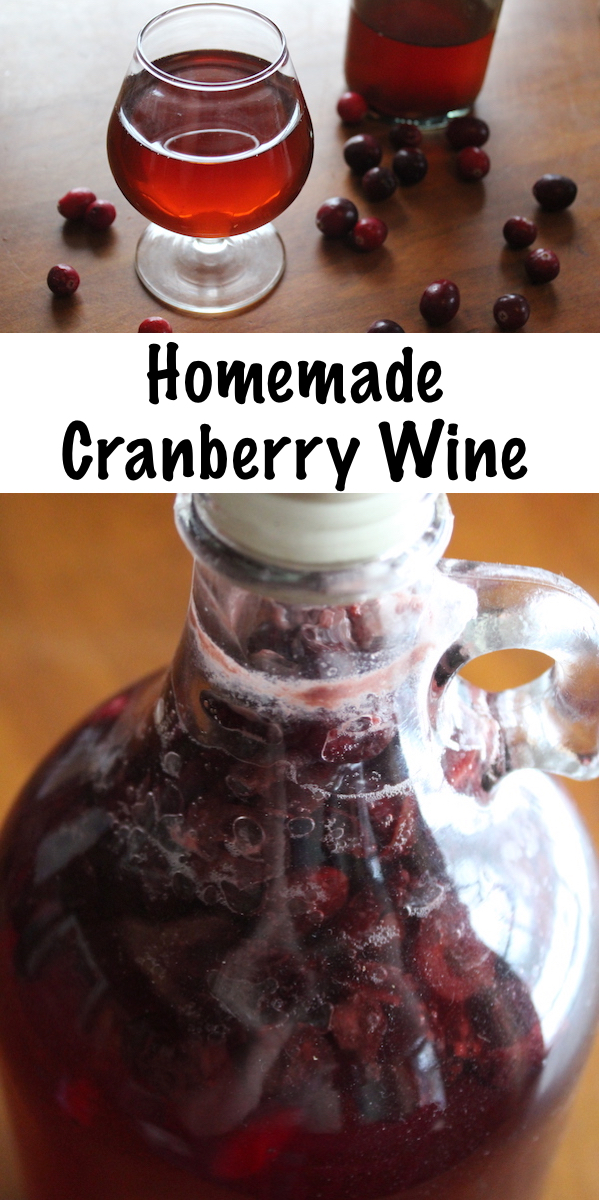



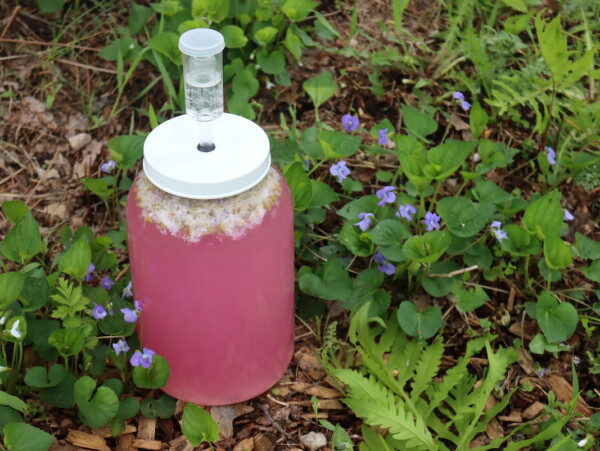










How hard is it to make cranberry wine or other kinds if wine?
It’s pretty simple really, the yeast do all the work =)
Hello! I used fresh wild highbush cranberries and followed the recipe. The only thing I did slightly different was heat the cranberries a little bit too along with my sugar and water , so they could release their juice. I am on day 3 with the initial ferment in a 80 degree room, but there is no action! Not even the slightest bubble! I am worried! Any suggestions? Thank you so much 😊
Kaila
When you’re using fresh cranberries you’re supposed to chop the cranberries and put them straight into the fermenter and then use water to dissolve the sugar in the sauce pan.